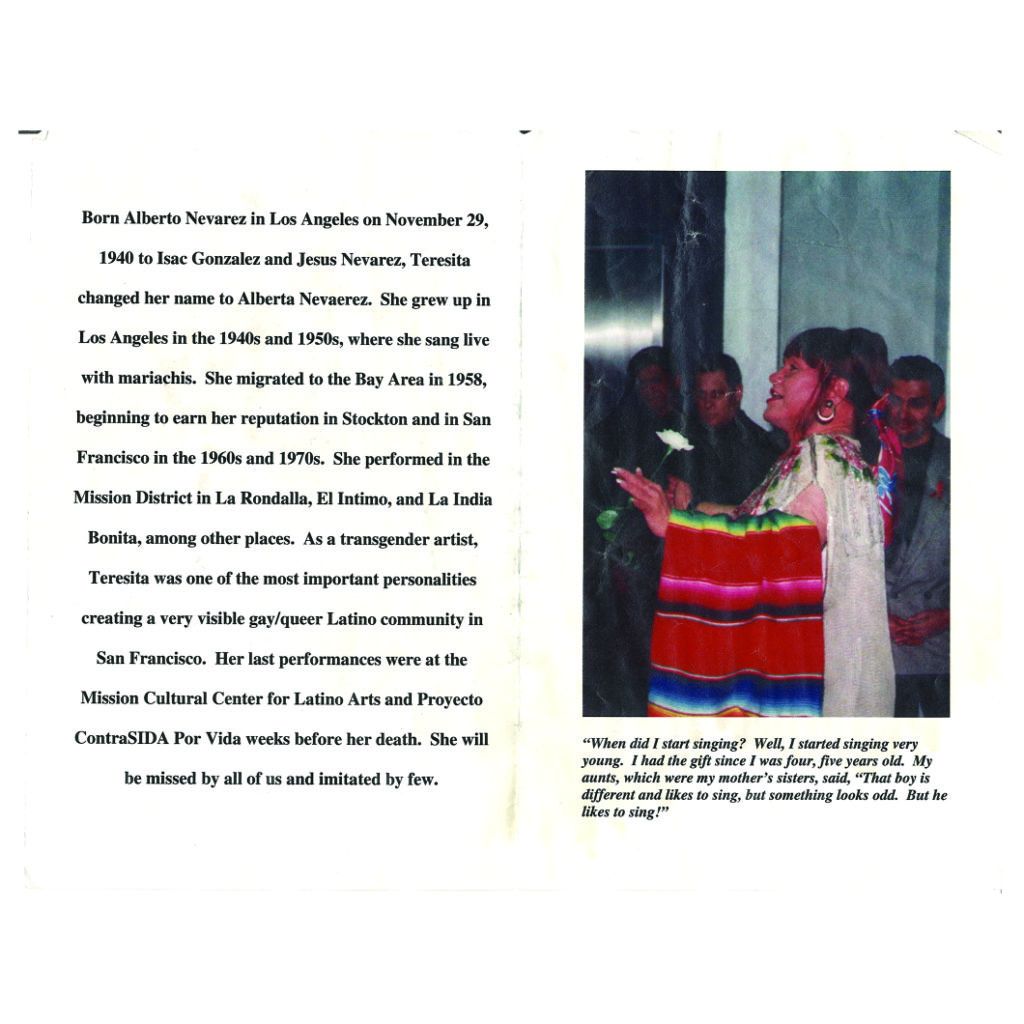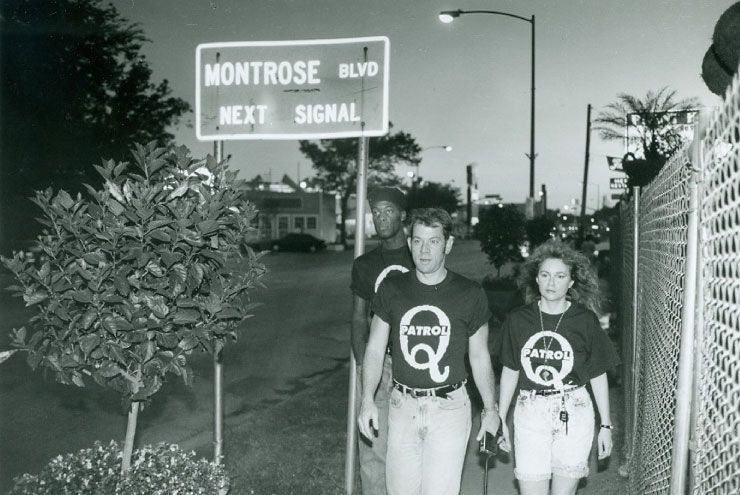By Yvan Oliva
“We have become adept at discovering the construction of social realities and deconstructing their architecture… Yet I have wondered sometimes whether, for example, we have truly taken seriously that the intricate web of connections that characterizes any event or problem is the story.” –Avery Gordon
In 1996, in a Washington DC queer bar called Escandalo (which translates to “scandal” in English), the transgender ranchera artist Teresita La Campesina gave a performance of the Lola Beltrán song “Puñalada Trapera.” A heart-wrenching ballad that rebukes an ex-lover for stabbing the narrator in the back (so to speak), it is one of the few remaining recordings of Teresita’s live performances. She was never given the opportunity to record an album of her own. The rendition is pretty classical as far as ranchera songs go, with vocals saturated in passion and tremolos that send shivers down your spine. All in all, it is an intimate performance of a song that speaks to loss and disillusionment as much as it celebrates epic romances—a duality many queer folks can relate to. And yet, Teresita’s performance itself speaks to so much more than the song’s original intent.
Born in 1940 in Los Angeles to working poor Mexican immigrants, Teresita was only 15 years old when her family of origin pushed her out to live on the streets. She quickly found work at Hollywood’s Club Guatemala, where she adopted the stage name “Margarita.” It was at this club where she first reached a wide audience. In some instances, her performances were even broadcasted live. By 1958, however, she had decided to make the trek to San Francisco, where her work would help to establish a very visible Latino queer community in the Mission District of the city. As a performer, Teresita’s songs were “peppered with camp, live reenactments of outrageous episodes, and plain old too-much-information,” writes oral historian Horacio Ramirez in his essay “A Living Archive of Desire.” Such is the spirit of someone who aptly labeled themselves as both “historical and hysterical.” As an illiterate trans Latina pioneering the genre’s movement north of the border, Teresita understood the importance of her work, of the fact that she was not only surviving despite decades of cruelty suffered by LGBTQ+ folks, but proudly embodying a specific record, gendered/sexual and racial/ethnic, of queer desire through her singing.

Like many other Latinx kids, I grew up listening to ranchera music but did not appreciate the genre until recent years. I associated it too much with the painfully over-romantic gestures that Latinos are wont to do, which of course, I would ultimately end up mimicking as well. But the genre is a very tender one, usually steeped in the vulnerabilities of love, both romantic and nationalist. Having populist origins in traditional Mexican folk music, the genre grew during a period of renewed Mexican artistic consciousness and came to be a national treasure. Artists like Lola Beltrán (Teresita’s favorite), Pedro Infante, Chavela Vargas (the queen of them all and an out lesbian), and Javier Solís all came to symbolize the grandeur of ranchera music. I’ve come to consider the genre quite integral to the Latina part of my identity, the part that exists on both sides of the border while collapsing temporalities and geographies. But I didn’t have this knowledge as a child—all I knew was that my father played this music too loud and it was embarrassing.
My fondness of the music stems from its inextricable attachment to my memories, like a soundtrack I didn’t ask for but eventually began to conflate with comfort. In particular, I am almost always taken back to the family dinners that took place at the now-defunct Doneraki Mexican restaurant off of Westheimer in Houston. My father would sing along at equal or greater volume than the singers themselves. Plus, those who know ranchera music are privy to the fact that a song is incomplete without el grito, that legendary, impassioned Mexican cry for liberation woven into the genre like a watermark on a dollar bill. My father was an expert at el grito, so much so that the sheer threat of one would flush my cheeks red. Back then it was embarrassing; now, it is a fond and complicated memory.
In 1996, I was four years old; Teresita La Campesina was 56 and had been performing for nearly four decades. At four years old, I had no understanding of how I felt about my body. Yet, it’s interesting to think that maybe somewhere along this timeline called my life, perhaps a fellow trans sister felt encouraged and empowered by seeing someone like Teresita perform, and that influence might have made its way into my own understanding of my body. The beauty of performance is that the artifice of it is like permission to envision a different mode of being. A genre like ranchera music is ripe grounds for reinterpretation by queer, marginalized bodies that crave those romantic, dramatic gestures of love. As for me, I will stick to my memories and sing to “Cien Años” while I cook breakfast.







